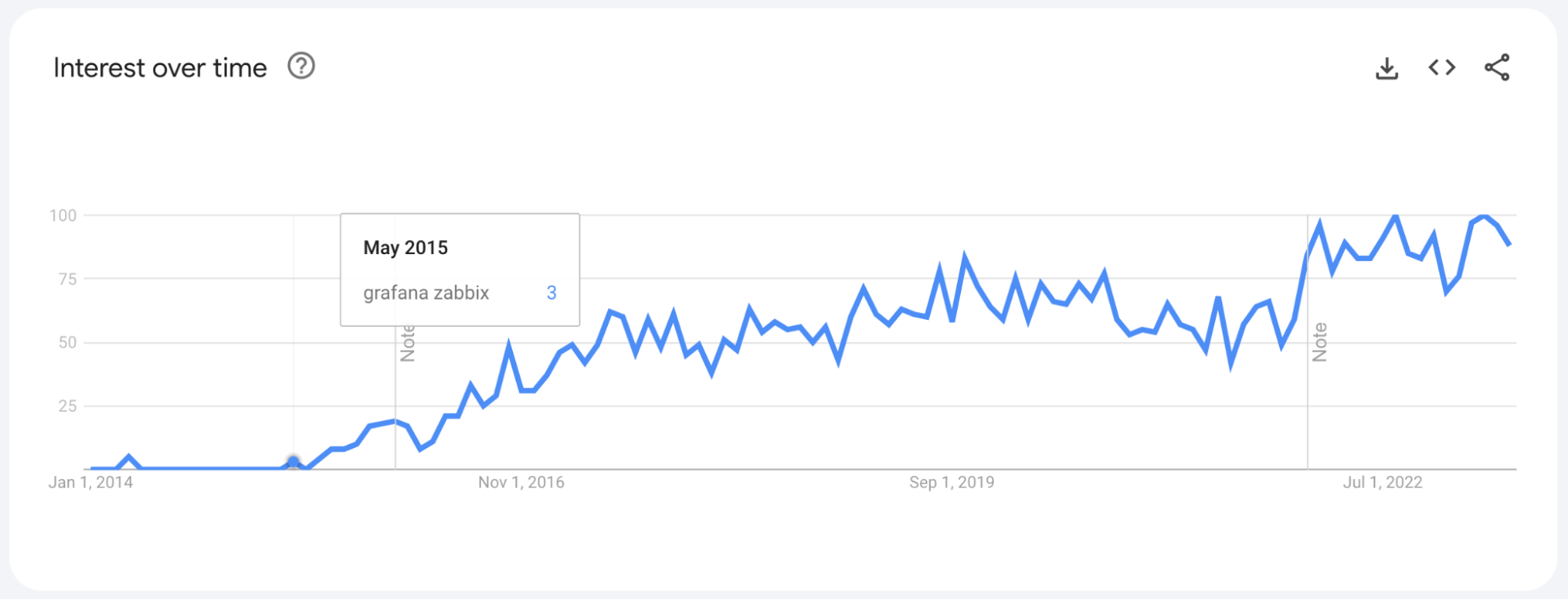
Zabbix plugin for Grafana: Grafana Labs will manage and maintain the popular plugin
I’m happy to share some exciting news! Grafana Labs is taking ownership of the Zabbix plugin, one of the most popular third-party data sources for Grafana over the years.
The Zabbix plugin for Grafana allows you to visualize data from the Zabbix monitoring system, offering a quick and powerful way to create dashboards. I personally started the project in 2015, with the goal of bringing a better dashboarding experience to Zabbix users.

In this post, we’ll take a quick look at the history of the plugin, and then explore why Grafana taking ownership of the project is a big win for our community.
A little story behind the plugin
When I started working on the Zabbix plugin back in 2015, I was working as a system administrator and monitoring was one of my areas of responsibility. I chose Zabbix as a primary monitoring system for our environment, but at that time, dashboarding and graphing capabilities were quite limited.
At the same time, I discovered a promising open source project called Grafana. At that point, I was using one of the early versions of Grafana (I started with Grafana 1.9), and it didn’t have a backend; it stored dashboards in the Elasticsearch database. I was impressed by the beautiful, interactive graphs and flexible dashboards supporting multiple data sources. Unfortunately, Zabbix wasn’t one of those supported data sources, so I started to search for a way to bring my data from there into Grafana.
After some research, I found that the best solution would be to build a Zabbix plugin. There wasn’t much documentation about how to do it, but thanks to the open source community and great support from Torkel Ödegaard, the creator of Grafana and a co-founder of Grafana Labs, I was able to get to work. I decided to put everything in GitHub and also share my solution at local meetups.
I published the first version of the plugin in May 2015, and immediately received lots of feedback and feature requests. It seemed like people all over the world had the same challenge as me, and we had found a solution. The plugin became popular very quickly and, in 2016, I got an offer to join Grafana Labs (called Raintank at that time).

Now, the Zabbix plugin is one of the most popular third-party Grafana plugins, with ~60k active instances installed, and represents one of the most popular non-core data sources (in fact, it’s the second most popular, after simple-json-datasource).
What does this mean for the community?
As the plugin grew in popularity, I always had lots of work to do to improve it and add new features. And as the code base also grew (the first version of the plugin contained 4 files and around 1,000 lines of code, and now it’s around 25,000 lines), it became even more difficult for me to support. I’d been the only maintainer of the plugin for about 8 years, and that wasn’t a realistic solution for long-term sustainability. The amount of work required to ensure a quality project was simply no longer suited for a one-person side project anymore. So, looking ahead, I felt Grafana Labs was the best candidate to maintain and further develop the Zabbix plugin.
For the community, Grafana Labs taking ownership of the plugin means that investment in the project will only continue to grow. A reliable future makes it even more feasible for community members to move towards the solution and use it for long-term projects.
On my side, personally, this change gives me an opportunity to work on other interesting projects and develop new skills, without affecting the plugin’s release cadence. That said, I’m not going to step away from the project completely; I still feel a personal responsibility for it. But I want to focus more on the future of the plugin, building a roadmap, and defining priorities.
The Zabbix plugin will still be open source and available for free — no changes there. So, I believe this is truly a win-win for all parties.
Thank you to all the community members who’ve contributed to the Zabbix plugin over the years, and I look forward to what’s to come!
To learn more about the Zabbix plugin, you can check out the plugin’s overview page and GitHub repo. And if you’re interested in learning more about the history of Grafana, in general, be sure to check out our new documentary, “The Story of Grafana.”



